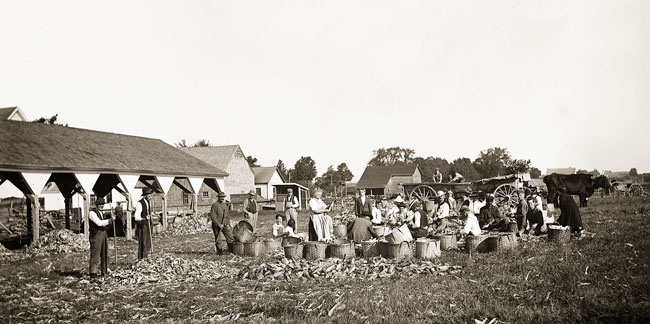B A C K T H E N
Corinth Corn
East Corinth Corn Factory. Sweet corn is husked at a corn shop, or canning factory.
The canning of corn and lobsters in Maine preceded the Civil War, but it was the wartime demand—canned beef was then a major item—and high profits that firmly established the industry.
Canned sweet corn became the premier product, and by 1920 there were more than 120 Maine “corn shops.”
Factory managers contracted with local farmers who typically grew one to three acres with factory-supplied seed. Come September, the managers set the prices paid, and farmers rarely saw the profits they had anticipated. As compensation, the refuse huskings made good stock feed, which cattle processed into future stalk feed.
Heavy manuring supposedly gave Maine corn its unique sweetness. Also, small stands were picked more than once, reducing the percentage of under- or over-ripened ears. The high reputation of Maine canned corn led some Western canners to label their product as being Maine corn.
Text by William H. Bunting from Maine On Glass. Published by Tilbury House Publishers, 12 Starr St., Thomaston, Maine. 800-582-1899.
Maine On Glass and prints of the photographs are available through the Penobscot Marine Museum: PenobscotMarineMuseum.org.

